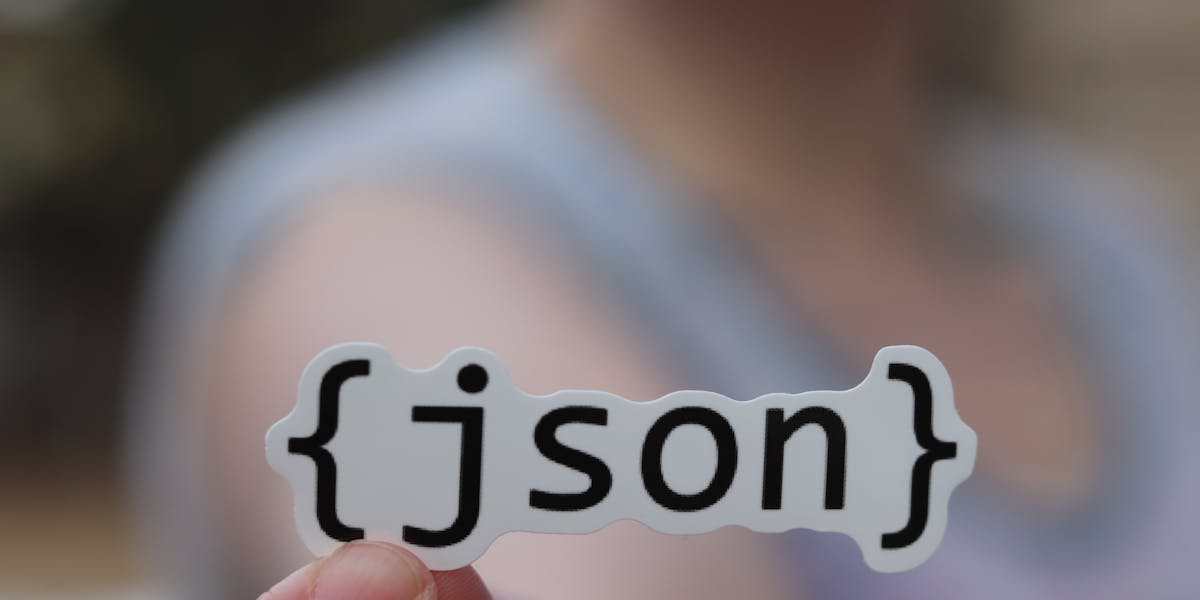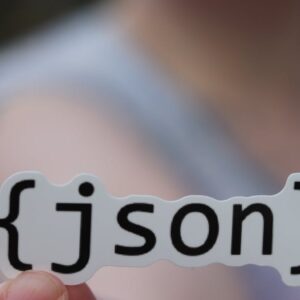JSON schema video template offers a structured way to streamline your video editing projects, providing a blueprint for organizing video content. As the digital landscape becomes more sophisticated, the use of JSON schemas is growing in popularity among video professionals who seek consistency and flexibility. Understanding how to effectively utilize JSON schema in video projects can significantly enhance the workflow, resulting in more efficient production and higher-quality videos.
In the following sections, we will delve into the basic principles of JSON schema for video templates, exploring the benefits and practicalities of using such schemas in your projects. By the end of this article, you’ll be equipped with the knowledge to create your own JSON schema video templates, avoid common pitfalls, and seamlessly integrate them into your editing software. Stay tuned as we uncover the potential of JSON in revolutionizing the way we craft video content.

“`html
Understanding JSON Schema for Video Templates
JSON Schema is a powerful tool used to define the structure and validation rules of JSON data. When applied to video templates, it provides a framework to ensure that the data used in video projects is consistent and follows a predefined format. This consistency is crucial for maintaining the quality and reliability of video outputs.
What is JSON Schema?
JSON Schema is a vocabulary that allows you to annotate and validate JSON documents. It defines various properties and attributes that a JSON object must adhere to, ensuring that the data is complete and follows the expected structure.
Why Use JSON Schema for Video Templates?
Using JSON Schema for video templates offers numerous advantages:
- Validation: Ensures that all data inputs are valid and conform to the required structure, reducing errors in video production.
- Consistency: Maintains uniformity across different video projects by enforcing a standard data format.
- Automation: Facilitates automated processes in video editing and rendering by providing a clear data structure.
Key Components of JSON Schema
To effectively use JSON Schema in video templates, it’s essential to understand its key components:
- Type: Specifies the data type (e.g., string, number, object) of each property.
- Properties: Defines the individual elements within the JSON object and their respective attributes.
- Required: Lists the mandatory fields that must be present in the JSON data.
- Enum: Provides a set of predefined values that a property can take, ensuring data uniformity.
Conclusion
Understanding and implementing JSON Schema in video templates is essential for creating efficient, error-free video projects. By defining a clear structure and validation rules, JSON Schema helps streamline the video production process, ensuring high-quality outputs.
“`
“`html
Benefits of Using JSON Schema in Video Projects
JSON Schema offers numerous advantages in video projects, making it an essential tool for developers and designers. Here are some key benefits:
1. Standardization
JSON Schema provides a standardized format for defining the structure of JSON data. This ensures consistency across different video projects, facilitating easier collaboration and integration.
2. Validation
With JSON Schema, you can validate the JSON data used in video projects. This helps in catching errors early, ensuring that the data adheres to the required format and constraints.
3. Automation
By defining the data structure with JSON Schema, it becomes possible to automate various processes in video projects. This includes generating templates and streamlining data handling, saving time and reducing manual errors.
4. Flexibility
JSON Schema allows for flexible data structures, making it easier to adapt to changing project requirements. You can easily update the schema to accommodate new features or data types without disrupting the entire project.
5. Improved Communication
Using JSON Schema enhances communication between team members. It serves as a clear contract that defines what data is expected, reducing misunderstandings and aligning everyone on the project’s data requirements.
6. Enhanced Documentation
JSON Schema acts as a form of documentation by clearly outlining the expected data structures. This makes it easier for new team members to understand the project and for existing members to maintain consistency.
7. Interoperability
By adhering to a standard format, JSON Schema facilitates interoperability between different systems and tools. This is particularly beneficial in video projects where multiple software and platforms are often involved.
Incorporating JSON Schema into video projects not only enhances efficiency and accuracy but also fosters a more collaborative and adaptable development environment.
“`
“`html
How to Create a JSON Schema Video Template
Creating a JSON Schema video template involves defining the structure and constraints of your video data. This process ensures that your video content is consistent and easily manageable.
Define the Video Schema Structure
Start by outlining the basic structure of your video template. Consider the key elements such as:
- Title: The name of the video.
- Description: A brief overview of the video’s content.
- Duration: The length of the video in minutes and seconds.
- Resolution: The video quality, e.g., 1080p, 4K.
- Format: The file format, such as MP4, AVI.
Specify Data Types and Constraints
Determine the data types for each element. For example, the Title and Description should be strings, while Duration might be a number. Apply constraints to ensure data validity:
- Title: maxLength of 100 characters.
- Duration: minimum of 0 to prevent negative values.
Include Optional and Required Fields
Decide which fields are mandatory and which are optional. This helps in maintaining flexibility while ensuring critical data is always provided:
- Required: Title, Duration, Format.
- Optional: Description, Resolution.
Validate Your JSON Schema
Use a JSON Schema validator to check for errors. This step is crucial to ensure that your schema is correctly formatted and adheres to JSON standards.
Document Your Schema
Provide clear documentation for your JSON Schema. Include examples and explanations for each field, making it easier for others to understand and use your template.
By following these steps, you can create a robust JSON Schema video template that enhances the organization and consistency of your video projects.
“`
“`html
Tips for Designing Effective JSON Schema Video Templates
Creating an effective JSON Schema for video templates involves careful planning and attention to detail. Here are some tips to ensure your templates are both functional and easy to use:
1. Define Clear Objectives
Start by defining the purpose of your video template. Understand the specific requirements and the types of videos it will support. This will help in designing a schema that aligns with your goals.
2. Use Descriptive Names
Ensure all fields in your schema have descriptive names. This makes it easier for users to understand the data structure and enhances the overall readability of the template.
3. Keep It Simple
Simplicity is key. Avoid over-complicating your JSON Schema. Use only the necessary fields and keep the structure as straightforward as possible to ensure ease of use and maintenance.
4. Incorporate Validation
Include validation rules to ensure the data entered into your template is correct and consistent. This can prevent errors and ensure the video template functions as intended.
5. Provide Documentation
Accompany your JSON Schema with comprehensive documentation. Explain the purpose of each field and provide examples where possible. This helps users understand how to effectively utilize the template.
6. Test Thoroughly
Before finalizing your video template, conduct thorough testing. This helps identify any issues or areas for improvement, ensuring a smooth user experience.
7. Gather Feedback
Once your template is in use, gather feedback from users. This can provide insights into any challenges they face and help you refine the template for better performance.
8. Stay Updated
Keep your JSON Schema up-to-date with the latest industry standards and tools. Regular updates can enhance functionality and maintain compatibility with new video editing software features.
“`
“`html
Common Mistakes in JSON Schema Video Templates and How to Avoid Them
Designing JSON Schema video templates can be complex, and it’s easy to make mistakes that could lead to errors in your video projects. Here are some common pitfalls and how to avoid them:
1. Overly Complex Schemas
One common mistake is creating schemas that are too complex. This can make them difficult to understand and maintain. To avoid this:
- Keep it simple: Only include necessary fields and attributes.
- Use clear naming conventions: This helps others understand the schema easily.
2. Lack of Validation
Without proper validation, errors can slip through. To prevent this:
- Implement validation: Use tools to check your JSON against the schema.
- Test thoroughly: Ensure all data types and formats are correct.
3. Ignoring Compatibility
Ignoring compatibility with video editing software can lead to integration issues. To avoid this:
- Check software requirements: Ensure your schema is compatible with the tools you’re using.
- Update regularly: Keep your schema updated with the latest software versions.
4. Inadequate Documentation
Without proper documentation, users may find it difficult to use your templates. To avoid this:
- Provide clear documentation: Include instructions and examples.
- Keep it updated: Regularly update the documentation as changes are made.
5. Not Considering Scalability
Failing to design for scalability can limit the usefulness of your templates. To prevent this:
- Plan for growth: Design schemas that can easily be expanded.
- Use modular design: Break down large schemas into smaller, reusable components.
By being aware of these common mistakes and taking steps to avoid them, you can create more effective and reliable JSON Schema video templates.
“`
“`html
Tools to Simplify JSON Schema Video Template Creation
Creating video templates with JSON Schema can be a complex task, but there are several tools available to simplify the process. These tools can help you streamline your workflow, ensure accuracy, and enhance the efficiency of your video projects.
JSON Schema Generators
JSON Schema generators can automatically create schemas based on your data structure. These tools are particularly useful for those who are not familiar with writing JSON Schema from scratch. They can save time and reduce errors.
- JSON Schema Editor: An intuitive interface that allows you to create and edit JSON Schemas visually.
- Online JSON Schema Generator: A web-based tool that generates schema from JSON data.
Validation Tools
Validation tools are essential for ensuring that your JSON Schema is correct and adheres to the required standards. These tools can check for errors and provide suggestions for improvements.
- JSONLint: A popular tool for validating JSON data and schemas.
- AJV: A fast JSON Schema validator that supports the latest specifications.
Integrated Development Environments (IDEs)
Using an IDE with JSON Schema support can greatly enhance your productivity. These environments offer features like syntax highlighting, auto-completion, and error detection.
- Visual Studio Code: Offers extensions for JSON Schema support, making it easier to write and validate schemas.
- JetBrains WebStorm: Provides built-in support for JSON Schema, enhancing code quality and development speed.
Version Control Systems
Version control systems are crucial for managing changes in your JSON Schemas over time. They allow you to track revisions, collaborate with others, and revert to previous versions if needed.
- Git: A widely-used version control system that integrates with various development tools.
- GitHub: Offers a platform for hosting and collaborating on JSON Schema projects.
By leveraging these tools, you can simplify the process of creating JSON Schema video templates, ensuring that your projects are both efficient and effective.
“`
“`html
Integrating JSON Schema Templates with Video Editing Software
Integrating JSON Schema templates with video editing software can significantly enhance the workflow and efficiency of video production. This process allows for seamless data management and customization, ensuring that video projects are both flexible and scalable.
Understanding the Integration Process
To integrate JSON Schema templates with video editing software, it is essential to understand how the data structure of JSON can be mapped to the software’s features. This involves setting up a bridge between the JSON data and the editing software to ensure smooth communication.
- Identify Compatible Software: Start by selecting video editing software that supports JSON integration. Many modern editing tools offer plugins or APIs that facilitate this process.
- Use APIs for Integration: Leverage the software’s API to import JSON Schema templates. This allows for automatic updates and synchronization between the JSON data and the video project.
- Customize Templates: Tailor the JSON Schema to fit the specific requirements of your video project. This customization can include defining parameters such as text fields, image placeholders, and video clips.
Benefits of Integration
Integrating JSON Schema templates with video editing software offers several advantages:
- Efficiency: Streamlines the video editing process by automating repetitive tasks and reducing manual input.
- Consistency: Ensures uniformity across different video projects by using standardized templates.
- Flexibility: Easily update and modify templates without disrupting the entire video project.
Challenges and Solutions
While integration offers many benefits, there are challenges to consider:
- Compatibility Issues: Not all video editing software may support JSON Schema. Research and choose software that is compatible with your needs.
- Learning Curve: Understanding how to effectively use JSON in video projects may require additional training or resources.
By addressing these challenges, you can harness the full potential of JSON Schema templates in video editing, leading to more dynamic and adaptable video content.
“`




